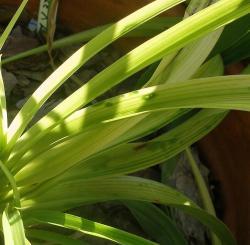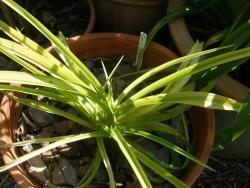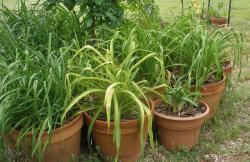needrain said:
@sooby
Not much available locally. I really wanted the liquid iron, but one place had some chelated iron. That didn't work when I lived in a place where many plants needed iron. As I understood it (a long time ago) the iron was actually in the soil, but other structures tied it up so it was unavailable to plants. When you used iron chelate, it promptly was bound up and didn't do what was needed. Liquid iron, on the other hand, was absorbed via the foliage and the effect could be seen overnight. There was another product today called 'Ironite', but it was only 1% iron and there were no instructions for using it other than as a hose-end application plus it had a LOT of other minerals included. I ended up buying iron pills. How much water to a crushed pill? For a spray or drip application to the foliage?
As far as I remember, and this was about fifteen years ago, I crushed one pill in a regular glass of water and poured it over a section of the leaves. Didn't do all of them because I wanted to see if there was a difference after the application. It didn't dissolve very well but it worked.
Yes, iron is usually in the soil in adequate quantities but gets tied up by a higher soil pH. That's why in that situation you generally use chelated iron rather than iron sulphate for a soil application because otherwise exactly the same thing will likely happen. Chelation is supposed to prevent that, that's the purpose of using iron chelate rather than iron sulphate. That's also why I suggested above that if the plant was in the garden then you could water once a week with a teaspoon of vinegar in a litre of water because that temporarily lowers the soil pH making the iron (and other micronutrients) available to the plants again.
However, a plant in a pot will only have access to whatever elements you have included in the medium/fertilizer, so the vinegar treatment won't necessarily work there if you haven't added sufficient iron for fussy plants, If significant lime has been added to the pot but no iron then you have a double whammy.
I'm assuming the human iron pills you got are iron sulphate. For a soil application that would be tied up by soil pH in the garden whereas iron chelate should still work. Iron sulphate might work in the pot if there is nothing antagonistic in it like high lime. It's better to pour the dissolved pill and water on the foliage for the test just in case because that by-passes the tying-up issue..
Iron chelate is what is usually sold for plants exactly because it should avoid the soil pH problem. It works here where sensitive plants like calibrachoa get iron chlorosis in potting mix most likely due to the high pH of the irrigation water. They go almost white at the branch tips and an application of chelated iron fixes it very quickly.


